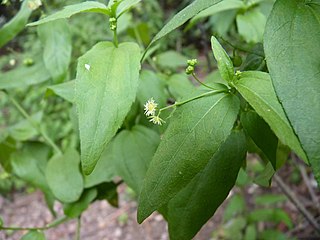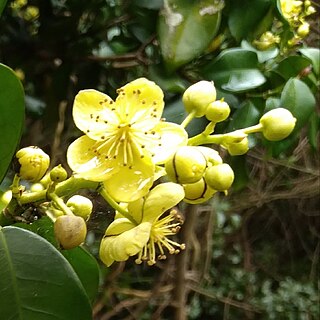| Chonocentrum | |
|---|---|
| Scientific classification | |
| Kingdom: | Plantae |
| Clade: | Tracheophytes |
| Clade: | Angiosperms |
| Clade: | Eudicots |
| Clade: | Rosids |
| Order: | Malpighiales |
| Family: | Phyllanthaceae |
| Genus: | Chonocentrum Pierre ex Pax & K.Hoffm. |
| Species: | C. cyathophorum |
| Binomial name | |
| Chonocentrum cyathophorum | |
| Synonyms [1] | |
Drypetes cyathophoraMüll.Arg. | |
Chonocentrum is a genus of the family Phyllanthaceae described as a genus in 1922. [2] [3] It contains only known species, Chonocentrum cyathophorum, native to the State of Amazonas in northwestern Brazil. [1] [4]
The genus is still not well understood; W. John Hayden has observed that the plant seems have been collected just once, in upper Rio Negro of Brazil in the 1850s, [5] and suggests that it has been misplaced taxonomically. [6] [7]










